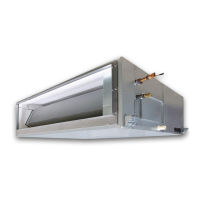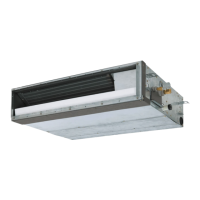Why is my Toshiba MMD-UP0271BHP-E Air Conditioner performing poorly?
- KKatherine JohnsonJul 28, 2025
Poor performance of your Toshiba Air Conditioner can be due to a failure to regularly clean both the indoor and outdoor units.

Why is my Toshiba MMD-UP0271BHP-E Air Conditioner performing poorly?
Poor performance of your Toshiba Air Conditioner can be due to a failure to regularly clean both the indoor and outdoor units.
| Brand | Toshiba |
|---|---|
| Model | MMD-UP0271BHP-E |
| Category | Air Conditioner |
| Language | English |
Wiring diagram for 4-way cassette type indoor units, illustrating connections for various components and controls.
Wiring diagram for ceiling type indoor units, illustrating connections for various components and controls.
Wiring diagram for concealed duct standard type indoor units, illustrating connections for various components and controls.
Wiring diagram for concealed duct high static pressure type indoor units, illustrating connections for various components and controls.
Wiring diagram for concealed duct high static pressure fresh air intake type indoor units, illustrating connections.
Wiring diagram for console type indoor units, illustrating connections for various components and controls.
Wiring diagram for high wall type indoor units, illustrating connections for various components and controls.
Detailed view of indoor print circuit boards (MCC-1643, MCC-1720, MCC-1696) with component identification.
Procedure for performing a cooling/heating test run of the indoor unit using wired or wireless remote controllers.
Procedure for setting indoor unit functions using DN codes via wired remote controller.
General overview of troubleshooting, applicable models, required tools, and normal behaviors to check.
Method for identifying trouble sites using check codes displayed on remote controllers, outdoor units, and indicator lights.
Procedure for accessing and interpreting check codes and trouble history displayed on the remote controller.
Detailed list of check codes, their locations, descriptions, system status, detection conditions, and check items.
Flowcharts for diagnosing specific indoor unit check codes like E01, E02, E03, E04, E08, E10, E11, E18, F01, F02, F03, F10, F29, F30.












